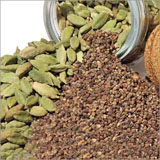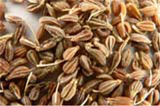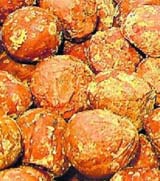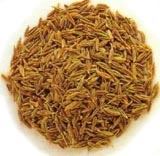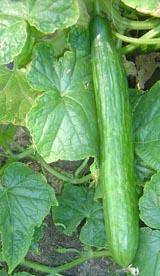Medicinal plants
Elaa or cardamom ( Elettaria cardamomum or repens)
From very early times, cardamom, which belongs to the plants of the ginger family (Zingiberaceae) bearing strongly aromatic seeds, has been a highly valued spice of the Orient. Cardamom, botanically named Elettaria (coming from the Sanskrit word Elaa) is native to India. It is indigenous to western and southern India and found wild in the rich moist forests of coastal Karnataka as well as Kerala. It is also intensively cultivated there in the tea and rubber estates and along the gullies and trenches of the coffee plantations of Coorg, as it thrives well in damp shady places. The plant grows as a wild variety in Sri Lanka, Burma and Malaysia. The source of these plantations is however believed to be India. It is now grown in large quantities in the humid forests of Central America, particularly Guatemala.
The plant has many varieties which are named after the place of their cultivation. Two varieties based on the size of the fruit are:
(i) E. cardamomum var. major refers to the wild indigenous cardamom of Ceylon and is the greater oblong or long cardamom and
(ii) E. cardamomum var. minor refers to all the other smaller cultivated varieties, especially those known as Malabar and Mysore cardamom. There are differences in the size of the plant, the nature of the leaf surface, the features of the flowering panicles and also the fruit capsules. But all of them are interfertile and the great amount of variation is mainly due to intensive cross-breeding. The Mysore variety is suitable to elevated areas, while Ceylon’s indigenous cardamom is a robust variety found in the island’s wet forests and has been successfully introduced to south India. There is a type called mysorensis, common throughout India, and another growing in the cardamom estates of Manjarabad near Mysore, called var laxiflora, which has loose panicles.
Cardamom cultivation is always done with much care. In fact, among the spices, there are almost none equal to cardamom in the care bestowed in the handling.
Cardamoms are a favourite masticatory spice in India. They are extensively used for sweet preparations such as kheer, confections, halwas, curries, pickles and innumerable dishes, sweet as well as savoury, to impart a characteristic aroma. They also find some application in medicine. Cardamom oil has some uses in cooking and in flavouring beverages. After eating the grains, the mouth experiences a sense of coolness. The seeds get spoilt if they are exposed to air, therefore the capsules are never opened until needed. Inside their capsular coat, the seeds can retain their quality and virility for three years. Fresh, big and strongly aromatic cardamoms are considered the best.
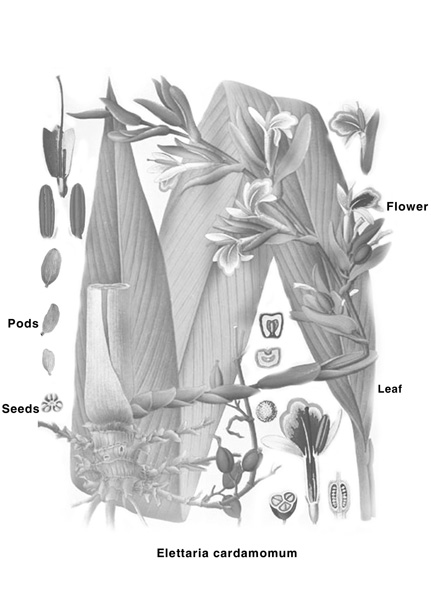
Early European physicians speak of five varieties of cardamoms:
i. Ceylon, wild, much used by them
ii. Round Cardamoms coming from Java,
Thailand and China
iii. Bengal Cardamoms
iv. Nepal Cardamoms
v. Winged Cardamoms, where the capsules
have wing-like expansions.
Names
Naturally this plant has a large number of names in Sanskrit, many of them being quite significant and revealing. They are elaa, bahulaa; bhringaparnikaa; candrabaalaa; candrasambhavaa, candrikaa, chardikaghnaa (destructive of vomiting), dravidodbhavaa, draavidii (born in the south, Dravida regions), gandhakuutii, gandhaphalikaa (with fragrant fruits); gauraangii, kapotavarnii; kshudrailaa (the smaller elaa fruit), sugandhi, suukshmailaa (the slender elaa), tiikshnaa-gandhaa, upakunchikaa, triputaa, truti.
This spice is called elaichi or ilaichi in Bengali, Hindi and many regional languages; elakki in Kannada; elakkay in Tamil and elakkaya in Malayalam.
Botanical aspects
Cardamom is a perennial, evergreen bushy herb with thick, fleshy, branching rootstocks or rhizomes (like ginger) and leafy stems growing to a height of 4 to 8 feet. It has a long branched inflorescence or panicle that arises near the ground level. The stem is clothed below with spongy leafy sheaths. The leaves are almost stalkless, 30-60 by 7.5 centimetres long. They bear bracts, i.e. leafy structures, along with flowers which are also linear and oblong and persist for a long time. The lip of the corolla is white streaked with violet markings. The fruit is sub-globose or oblong, about 13 millimetres long and marked with many fine vertical ribs. The fruits are borne in bunches.
The capsular fruit is somewhat triangular or three-sided, rather pointed towards the tip and somewhat rounded at the base. The fruit wall is like paper, thick dark green, on the surface of which vertical lines are clearly discernible. The fruit is tasteless. The seeds inside are numerous, aromatic, hard, some-what triangular, but not pointed and slightly wrinkled. They are a reddish-black on the surface and whitish inside. Their fragrance is delicate and very charming. The taste is bitingly pungent in a way, but full of fragrance.
Constituents
The seeds contain 4-8 % of a fixed essential aromatic oil (which is its active principle), considerable amount of terpinyl acetate, cineole, free terpinol and limonene; potassium salts, starch, nitrogenous mucilage, a yellow colouring matter, ligneous or woody fibre and ash containing manganese.
Actions according to traditional medicine
Ayurveda regards the seeds as bitter, cooling, pungent and richly aromatic. They cause biliousness. The smaller variety of cardamom removes kapha. It is cold in virility and is useful against cough, breathing difficulties, impotency and difficult urination. All cardamoms are powerful aromatics, stimulants and carminatives. They are also excellent stomachics. They clear the mouth, and are pleasing to the heart and good for the brain. They are useful against asthma, bronchitis and diseases of the throat. They are useful for scabies and pruritis among skin affections and are employed beneficially for diseases of the kidney, bladder and rectum. These actions are all due to the essential oil that is contained within them. They counteract poison but cause abortion.
Yunani physicians consider cardamom as hot and dry in the second degree. They regard it as fragrant, stomachic and laxative, a diuretic and carminative, acting as a tonic to the heart, lessening inflammations and useful against headache, toothache and earache as well as complaints of the liver, chest and throat.
They recommend it alone or along with water to be chewed which gives a fragrant smell and a sense of well-being. This works best in cases of stomach pain, due to vaata indigestion and flatulence. It strengthens the heart and keeps the mind and temperament gracious and pleasant.
Medicinal and other uses
Cardamom is an article of some considerable commercial value. It is exported largely to foreign countries where its use as a spice is prevalent, especially as a flavouring agent for sweetmeats, beverages and liquors. In the Middle-East, cardamom is much used for flavouring coffee.
In medicine it is used mostly as an adjunct to other carminative medicines. But its use is officially recognised in the authoritative pharmacopeas of both the United States of America and Great Britain. They use it as a carminative, stimulant and flavouring agent. Cardamom oil is employed in medicine as well as in the perfume industry.
From time immemorial in India, cardamom has been used to make preparations sweet and beverages fragrant.
Ayurveda uses it to improve the quality and taste of most of its medicinal preparations such as powders, pills, confections, etc.
Cardamom is a safe carminative and can be employed well during the convalescent stages that follow diarrhoea.
In the form of tincture, cardamom is advisedly used in both Western and indigenous systems of medicine as a frequent adjunct to other stimulants, bitters and purgatives.
In disorders of bile secretion or decreased intestinal secretions cardamom is advised.
Another area where using cardamom is highly beneficial is in cases of neuralgic pains. Here, 15 rattiis of cardamom are given along with 2-3 grains of quinine.
Both the root and fruit are also used by the Cambodians in their medicines. The root is used for its laxative and tonic properties. The fruit is considered a tonic, stimulant, stomachic and emenagogue (correcting menstrual disorders). Internally, it is given in cases of liver disease and uterine complaints. Externally, it is applied to tumours of the uterus.
In general, cardamom proves beneficial in cases of all diseases of the digestive tract where a burning sensation is predominant or whenever there is overall laxity. It is also beneficial if there is a scarcity of intestinal secretion and if biliary secretion is not satisfactory.
Cardamom as a household remedy
Some household tips for using cardamom are as follows:
I. Digestive troubles
i. If one chews a few grains of cardamom well and finally swallows them, the mouth will remain fragrant for a long time, the distress of thirst will be overcome and food will be easily digested.
ii. A powder made of equal proportions of parched cardamom seeds, anise seeds and caraway seeds is given in one teaspoonful doses as a good digestive.
iii. An excellent powder is prepared by grinding together equal amounts of cardamom, dry ginger, cloves and carraway.
iv. Swallowing a whole cardamom along with its husk within a morsel of well-ripened banana fruit daily before going to sleep, proves beneficial against constipation, indigestion and piles.
v. If you are troubled by indigestion due to excessive consumption of bananas, chewing a few grains of cardamom will help.
II. Poisoning
In case of suspected poisoning, eating a few
grains of cardamom before meals is a good and safe preventive measure.
III. Dizziness and nausea
i. Chewing cardamom grains well and swallowing them will prevent stomach upsets, dizziness, excessive salivating, as well as any feeling of nausea.
ii. Another measure for overcoming dizziness and nausea is to take cardamom powder in a glassful of lemon juice.
iii. A popular and domestic remedy for relief from giddiness caused by biliousness or pitta is to prepare a decoction of cardamoms together with their fruit wall, adding jaggery and then administering as a drink.
IV. Aid to memory
Drop a pinch of cardamom powder in a glassful of milk and boil well. Add a spoonful of honey or powdered sugar candy. Consuming this milk daily at night helps develop an excellent memory and wards off burning sensations during urination. It is also a good aphrodisiac.
V. Liver complaints
Adding a pinch of cardamom powder to a decoction of cumin seeds and consuming a cupful of it regularly will remove the distress of liver complaints, stomach upsets, vomiting and dizziness.
VI. Tiredness in the body
A hot cup of tea prepared with an addition
of cardamom powder refreshes the body, helps dysentery, diarrhoea, obstructed urination and any burning sensation accom-panying urine flow.
VII. Vomiting
i. To check vomiting, a compound powder is made from 5 parts of cardamom seeds, resin of Shorea robusta 2 parts, flowers of mesua ferrua 3 parts, black pepper 4 parts, fried borax 5 parts, long pepper 6 parts and sugar equal to their united measure, viz. 21 parts. This is a good nutritive tonic and demulcent (cooling and soothing), being useful for bronchial affections. This is given in doses of 5 to 20 grains three times a day.
ii. Drop three to four pinches of cardamom powder into a cupful of tender coconut juice, with two spoonfuls of honey to stop vomiting. However, in case the vomiting is violent and frequent, adopt this measure thrice a day for two to three days. This course will give excellent results.
VIII. Painful urination
Warm cardamom seeds with a small amount of mastich gum (mastagi in Hindi — a kind of fine resinous gum excreted from the trees of Pistacia lenticus, Linn., a type of pista) in a glass of boiled milk eases any burning sensation associated with urination.
IX. Heart disease
Prepare a powder from the seeds of cardamom and pipalmul. Mix the powder with ghee and use it as an electuary to ward off heart diseases due to kapha.
X. Kidney stones
Cardamom seeds along with the seeds of cucumber are very beneficial in case of stones in the kidney and bladder.
XI. Headaches
Sniffing finely ground cardamom powder will induce a good sneeze, which will relieve any headaches.
XII. Nervous pains
In case of nervous pains, fifteen rattiis of cardamom mixed with two to three grains of quinine helps.
Caution
Cardamoms are harmful to patients with chest and lung diseases. Vamshalochan or bamboo manna can counter these deleterious effects.
Bibliography
1. K.M. Nadkarni. Indian Materia Medica, Vol. I. Mumbai; Popular Prakashan Private Ltd., 1982.
2. K.R. Kirtikar and B.D. Basu. Indian Medicinal Plants, Vol II. Dehradun; International Book Distribution, 1988.
3. Naveen Patnaik. The Garden of Life. New Delhi; Harper Collins Publishers, 1993.
4. N.K. Shanmugam. Mooligai Kalai Kalanjium. Chennai; Kalaiselvi Publications, 1997.
5. P.K. Warrier, V.P. Nambiar, C. Ramankutty. Indian Medicinal Plants. Chennai; Orient Longman Limited, 1996.
6. The Wealth of India. New Delhi; Publications and Information Directorate, CSIR, 1976, [Vol.X]: 171-7.
7. The Useful Plants of India. New Delhi; Publications and Informations Directorate, CSIR, 1986.
8. Bhandari, Chandraraj. Vanaushadhii Candrodaya. Varanasi; Chaukhambha Sanskrit series, 1970.
Dr. K.H. Krishnamurthy wrote about medicinal plants as used in the Indian context with deep interest.
Share with us (Comments, contributions, opinions)
When reproducing this feature, please credit NAMAH, and give the byline. Please send us cuttings.




